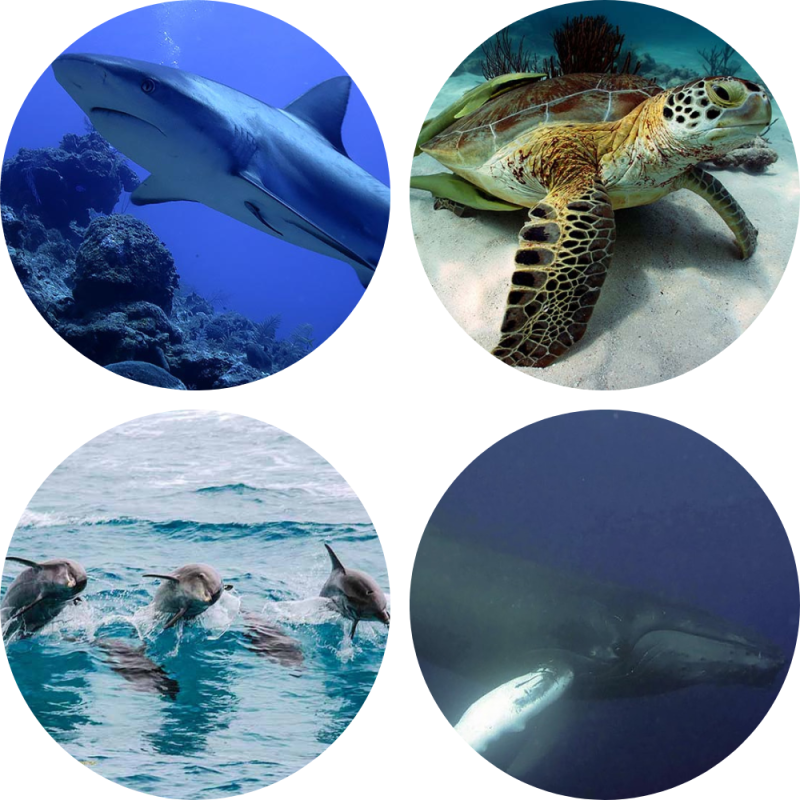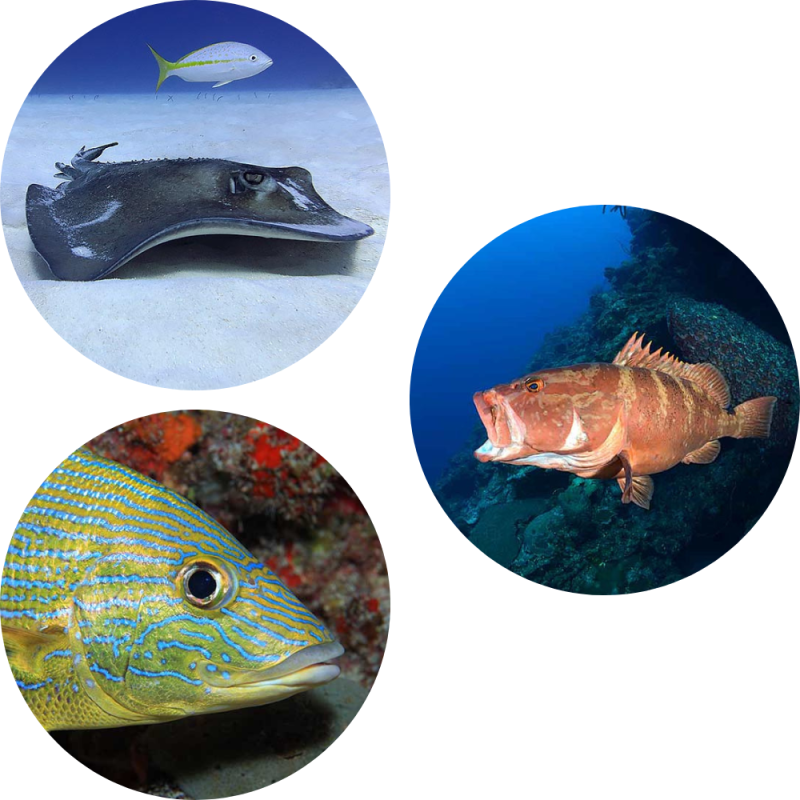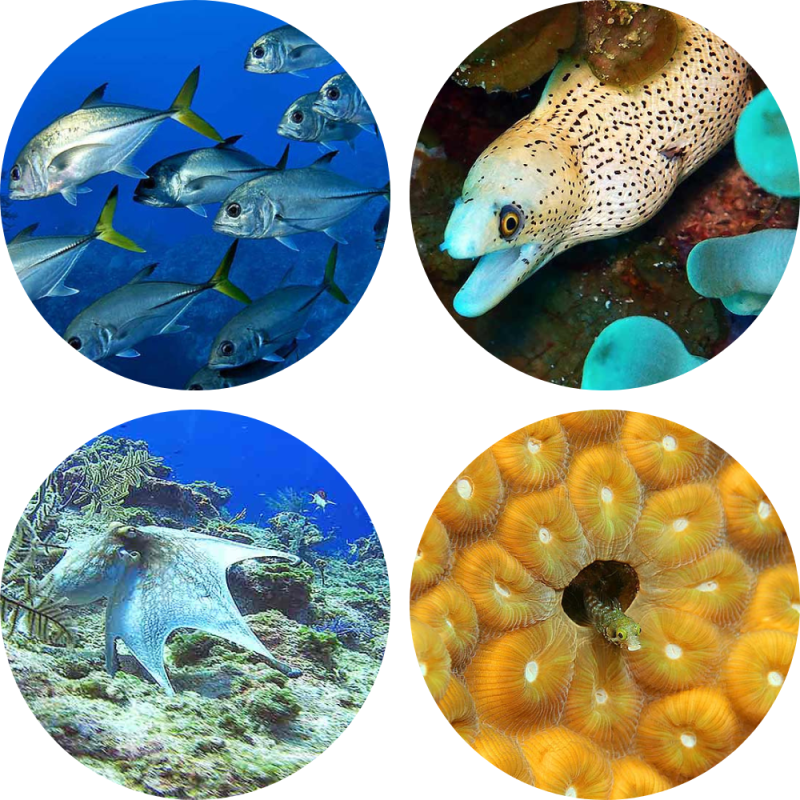Turks and Caicos Sharks: One of the highlights of scuba diving Providenciales is the frequency with which we get to observe one of several species of Turks and Caicos sharks. Caribbean reef sharks are frequently seen cruising the depths off the walls at the Provo dive sites along North West Point and West Caicos But do not discount Grace Bay, which often produces a shark fest all its own. While Caribbean reef sharks and nurse sharks are the most common, blacktips, lemon sharks, tiger sharks, and hammerheads are sometimes spotted.
Turtles: Always a crowd-pleaser, these pre-historic creatures, although endangered in many areas, are commonly seen on our dives. The very pretty Hawksbill Turtles are most commonly sighted.
Bottlenose Dolphin: Sometimes seen underwater on dives, but more often enjoyed as they play in the wake of the boats traveling to and from the dive sites. Perhaps the best-known denizen of the Provo sea is “Jojo,” a bottlenose dolphin who has frequented the area since the 1980s. Jojo is wild but frequently visits divers and seems to enjoy human company.
Whales: Humpback whales are frequently seen from January through March when they migrate to the Silver Banks off the Dominican Republic to mate and calf.



